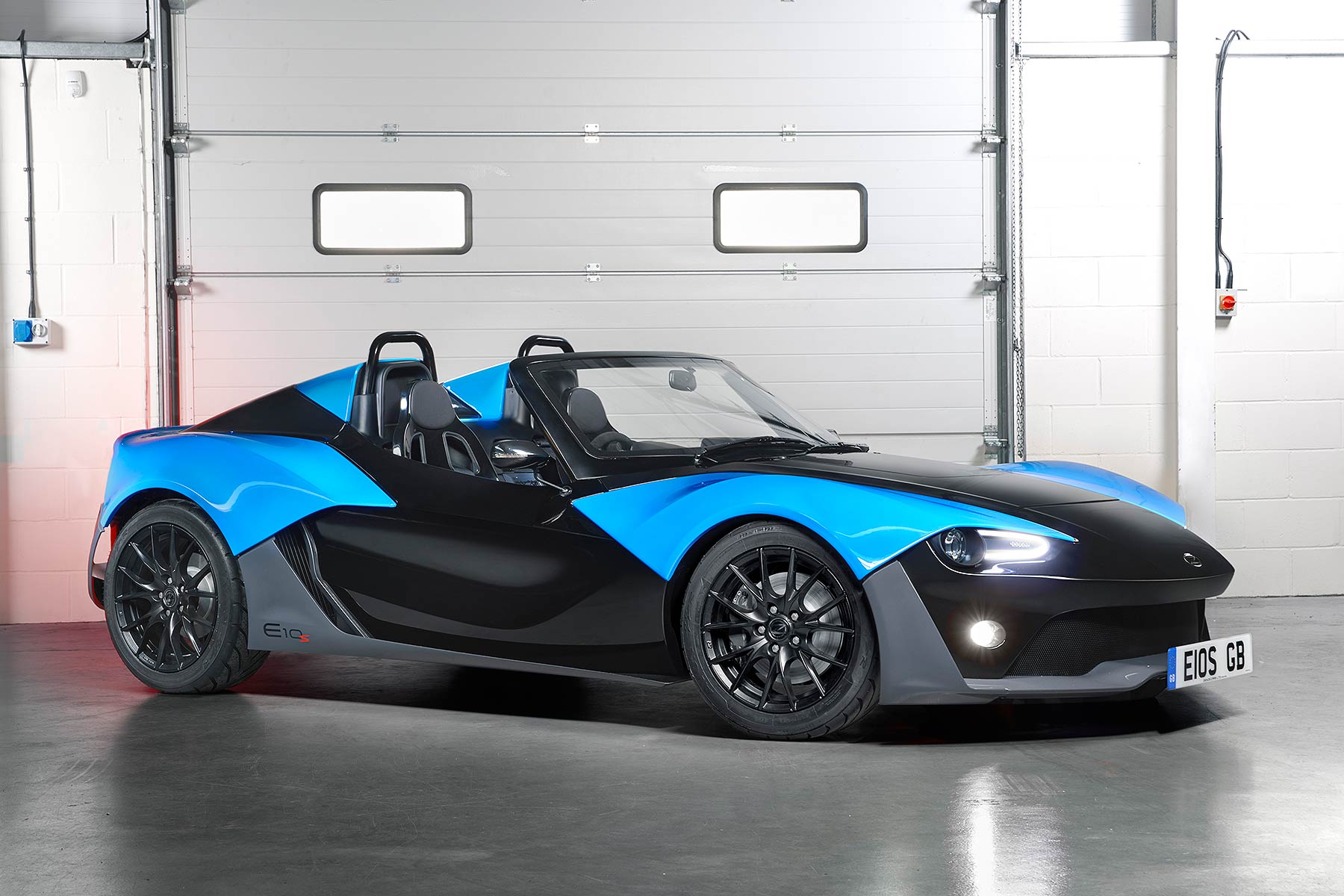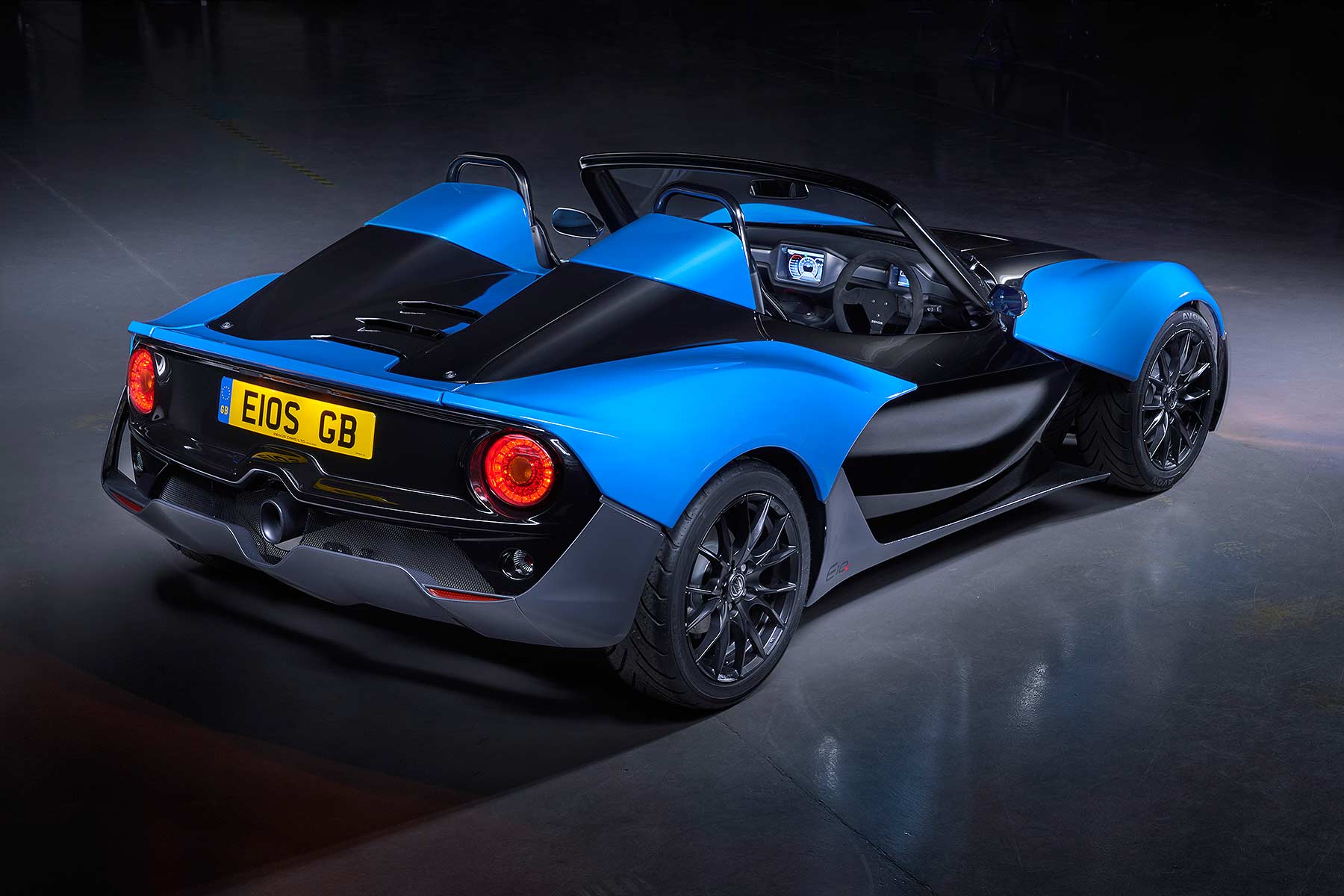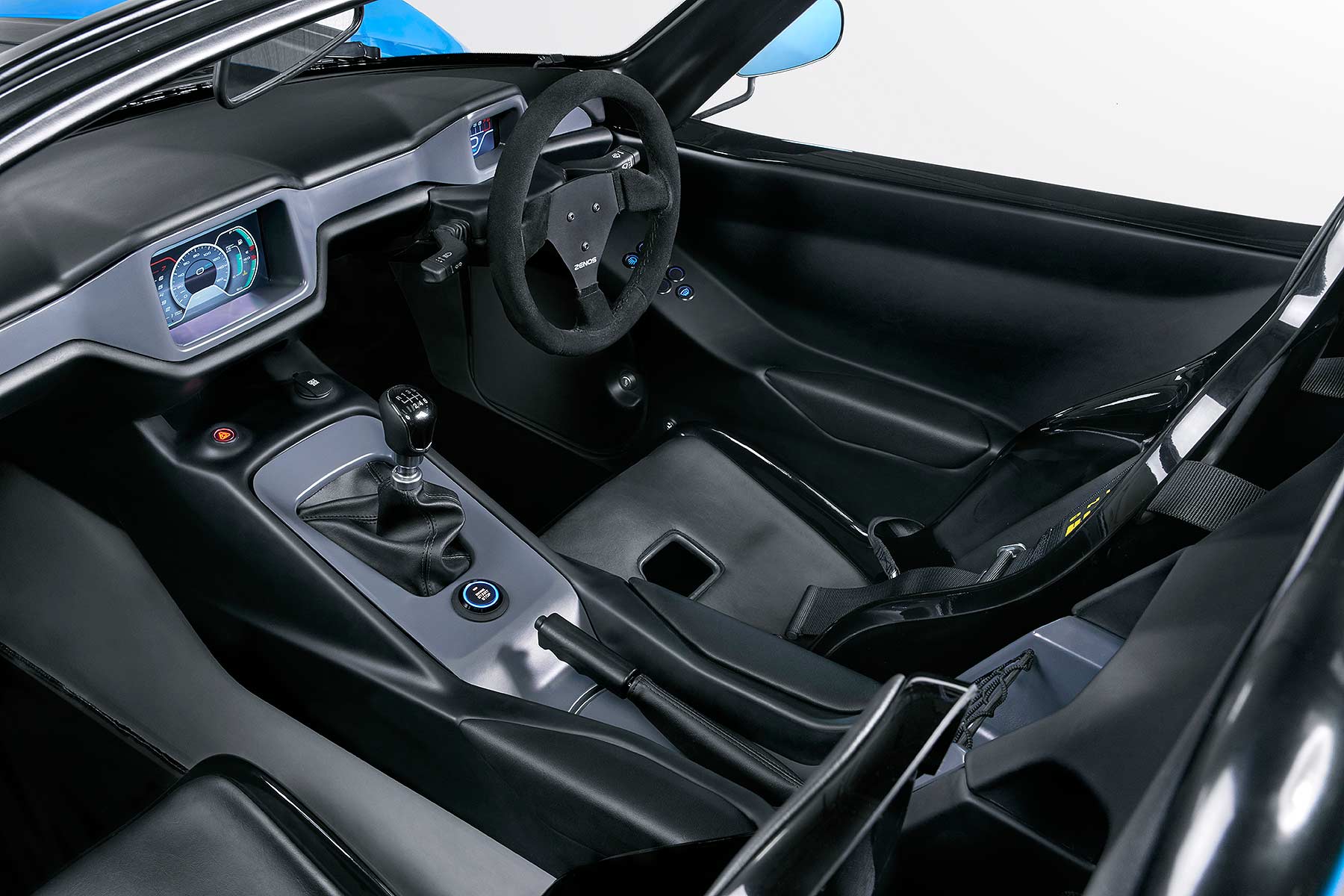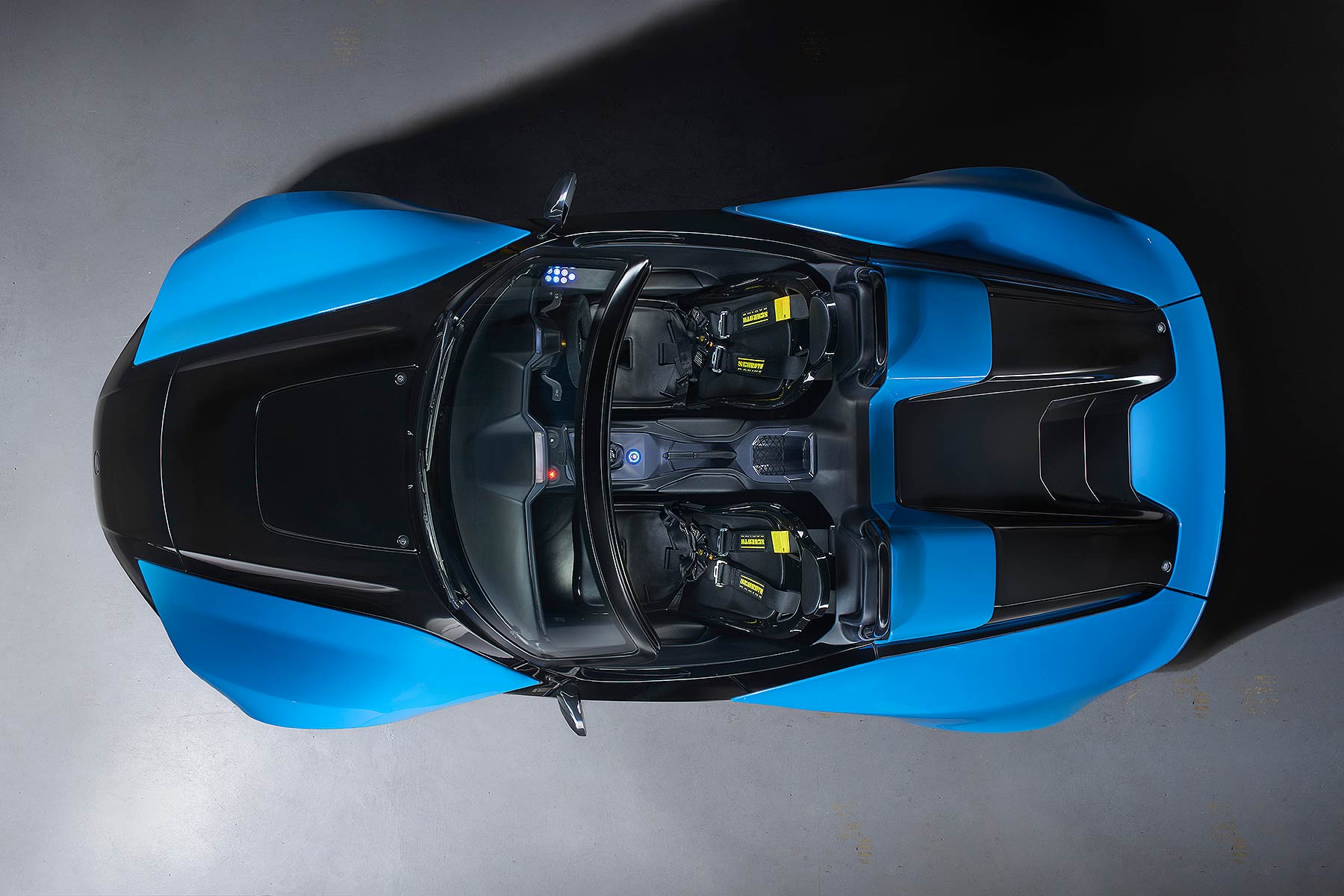 Startup Zenos creates a car that’s supercar-fast, as affordable as a hot hatch and as delightful to drive as you’d hope a modern British sports car would be
Startup Zenos creates a car that’s supercar-fast, as affordable as a hot hatch and as delightful to drive as you’d hope a modern British sports car would be
Richard Aucock | March 2015
You may not have heard of Zenos, Britain’s newest sports car company: it only launched in September 2013. Based in Norfolk, home of Lotus, it showed its first car, the E10, as a concept at the 2014 Autosport International Show. And now, in March 2015, it’s launching it to the world as the first customer cars are in production.
Even if you don’t know Zenos, you’ll know that’s pretty impressive. This car didn’t exist even on a sheet of paper 24 months ago, yet we’re about to drive it as production cars roll off the line (at a rate of nearly 30 a month). Zenos kept its promise there.
It kept another promise: the 2.0-litre E10 costs £24,995. The more powerful E10 S, with a turbocharged 2.0-litre (from the Ford Focus ST) costs from £29,995. That’s hot hatch money. What’s more, the E10 has been developed by a crack team of ex-Lotus and Caterham engineers, led by co-founders Ansar Ali and Mark Edwards. Familiar names? Yes, they were formerly CEO and COO of Caterham Cars.
Zenos is a different type of British sports car company, says Ali. One focused on creating fun, affordable, exciting sports cars. “Some established players do some of that: we insisted we had to offer it all.” Affordability is an absolute fundamental, stresses Ali, both buying and running the E10. Ford mechanicals peg maintenance bills and ensure reliability; multi-part composite body panels mean minor prangs cost hundreds, not thousands to fix (no one-piece clamshells here…).
It’s made from an extruded aluminium central spine, to which front and rear subframes are bolted. A carbon fibre composite cockpit is fixed to this: if it sounds familiar, it’s because it’s similar to how the original Lotus Elan was made. That used fiberglass though – Zenos’s recycled carbon fibre (with thermoplastic honeycomb core) is a brand new material that’s light, affordable and still seven-tenths as strong as F1-grade carbon fibre. Ingenious.
The rest of it is intentionally simple, with a paired back cockpit (that’s rinse-clean with a hose if you’re brave – good job as there’s no roof) based around two electronic displays. Seats are hard-shell, harness-equipped buckets, the (heated) windscreen is optional and there’s no heater, but heated seats instead (the perfect solution). This car is all about the driving. So how does it drive?

What’s the Zenos E10 S like to drive?
The Zenos E10 S is an outstanding car to drive. The purity of it is of the highest order, the excitement is absolute and the confidence it inspires from the off is backed up by utter predictability should this confidence generate over-exuberance. It is brilliant fun.
Key to it is the feeling of being not far removed from a racing car. The meaty, direct steering demands muscle from the off but then mere tweaks of the wrist once up to speed – with instantaneous bite from the front end as your reward. It near-floods you with sensations, from the gentle squirm beneath your fingers to the constant weight variations that key you directly into the surface below.
It also has the attitude of a racing car, a feeling of lightweight, well-honed depth that means you’re directly keyed into things and enjoy what it’s giving back to you. Track-bred inboard Bilstein suspension dampers help here; so too does the fact they have been tirelessly developed across Norfolk’s infamously bad roads to give it poise a Lotus would be proud of.
That’s praise of the highest order, too: the ride is a revelation, with pliancy and absorbency that helps it breath with tremendous subtlety across gnarled roads, while also feeling utterly dialed into the surface below. The last time I experienced suspension with this satisfyingly perfect precision of body control, I was driving a BTCC car.
It handles sharply and tidily, as you’d expect, albeit without the aggression you might think of a car with supercar pace (the light kerbweight and focus on simplicity pays dividends here). What’s more surprising is the fact you can happily press on almost from the off and very quickly start nudging its limits without fear – and, when you do breach them, you immediately and instinctively correct it with Hamilton-like ability (so it feels). It makes you into a hero.
Even the brake pedal is flooded with sensation. OK, it’s heavy – there’s no servo assistance so, to the uninitiated, will feel near-solid – but work them and the Alcan stoppers give so much clarity, you’ll never want for ABS.
And the engine? Yes, it’s quick. 250hp and 295lb ft (400Nm) of torque, in conjunction with a 725kg kerbweight (less than a Smart Fortwo!), can’t fail to deliver fireworks. What’s more impressive is how easy it is to use. A well-crafted engine installation (with the help of Ford) means it’s no harder to drive than a Focus ST; the high-mounted gearlever is slick and all that torque means you don’t need to use the high revs of rival sports cars to feel like you’re in a supercar.
Boy, though, is it loud – and not so much the engine, but the turbo induction roar. This whistling, fluttering and howling is near-piercing at times; all part of the race car experience (it’s a bit like a modern F1 turbo, you sense), but a helmet or ear plugs is recommended. Not a problem if like most Zenos owners, you are actually taking it onto the track, of course…

Does the world need the Zenos E10 S?
You might initially assume the world doesn’t need another British sports car. We have lots of them, and lots of them fail. Zenos, it says, is different. It has no baggage. It’s not starting out trying to recreate something, or revive something. It didn’t even start out with a car in mind, said Ali: the target price came first, then the business plan around it, then the E10 itself.
This mature, customer-focused philosophy is the professional approach you find at Ford, or BMW: it’s unusual in niche sports car firms. But it’s what’s helped Zenos create such a highly focused E10 S that hasn’t grown obese, become expensive or whooshed past its promised delivery date during development.
It’s also what makes the E10 such an appealing ownership proposition. There’s the implicit assumption you can utilise Ford dealers – and there are more of them in the UK than any other car brand – for maintenance, maybe even servicing. That crashing it won’t ruin you. That you can use it on track without throwing money at tyres, brakes, expensive mechanical bits. The same purity you sense when driving it is also present in running it. You’re not scared to use it.
Many British sports car companies forget all this, get carried away with an ideal, a vision, then burrow down to deliver this and hang the cost, complexity and delivery targets. £25,000 cars become £40,000 cars and they then wonder why they fail. For Zenos, that’s unacceptable. It defined how the E10 should be in 2014. That’s exactly how the E10 is soon to be delivered.
This included good visibility, a roomy enough cabin, a nice driving position; it has no boot, and no doors, and no roof but, like a Caterham, that’s not so much of an issue given its intended usage. Instead, details like the fast-demist heated windscreen, excellent forward visibility (with sharply-defined front wings helping inch-perfect placement of the nose) and surprising resistance to wind buffeting at speed (so GoPro footage isn’t too blustery..?) all count.
There’s something else likeable about Zenos the company, too: it ‘gets’ the modern world. It’s an open, transparent company. It speaks to its customers, gets chief engineer Chris Weston to drive them sideways at high speed then get their feedback, then lets them into prototypes to find out what they think. Could’ve backfired on us, says Mark Edwards; instead has helped define the company as a very modern, social, connected and engaging car company.
All this would be for nought if the Zenos E10 weren’t able. But it is, very much so indeed. It has the breeding and engineering integrity of a company many decades old, barely two years young. And if Zenos can do this now, imagine what it will be able to do next. Yes, the sports car world absolutely needs the shake-up ambitious, skilled Zenos is about it give it.

Verdict: 2015 Zenos E10 S
The Zenos E10 S has really thrilled us. It’s brilliant to drive, exciting to look at and sit in, wonderfully purist and pleasingly modern. A proper 21st century British sports car, one that benefits from its clean-sheet design and is pitch-perfect for its target market as a result.
The price is the clincher – all this very high-level, throughly-developed and driver-delighting engineering could be yours from £24,995. Even the rapid E10 S we drove was less than £30k. It’s a fantastic new entry into the marketplace that we’re convinced there’s a space for.
Welcome to the sports car world, Zenos. We’re glad you’ve arrived.
Rivals: Zenos E10 S
- Caterham Seven
- Westfield
- Lotus Elise
- Toyota GT86/Subaru BRZ
- Ford Focus ST
The obvious two rivals are the Caterham Seven (aged), kindred spirit Westfield (also aged) and Lotus Elise (not quite as aged, but… not cheap, either). The middle ground are the Toyotabru twins; the fact Ford Focus ST drivers could get a Zenos E10 S for similar money may well be more significant…
Specification: Zenos E10 S
Engine 2.0-litre turbo four-cylinder
Gearbox Six-speed manual, rear-wheel drive
Price from £24,995
Power 250hp
Torque 295lb ft (400Nm)
0-62mph <4.0 seconds
Top speed 150mph
MPG N/A mpg
CO2 N/A g/km